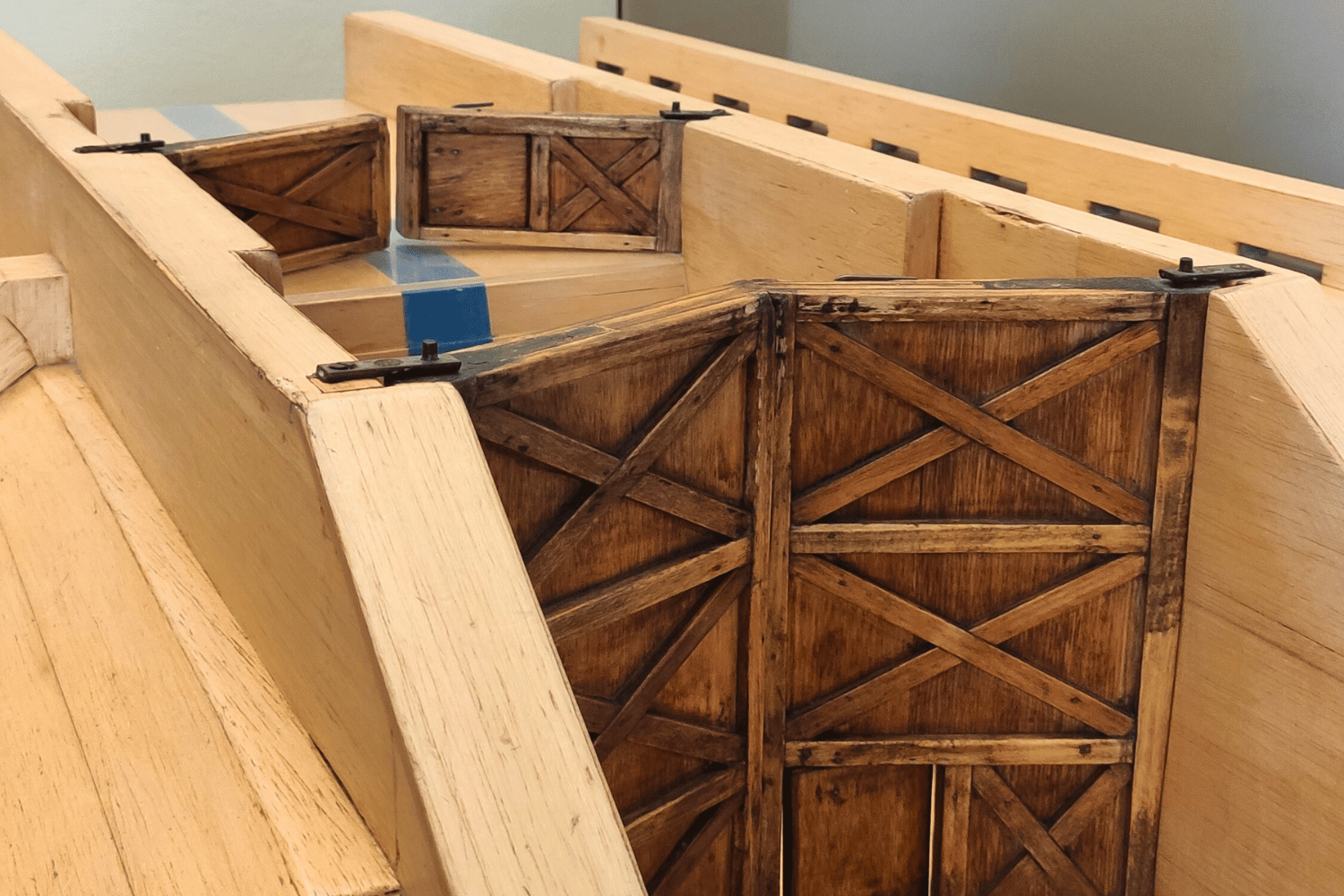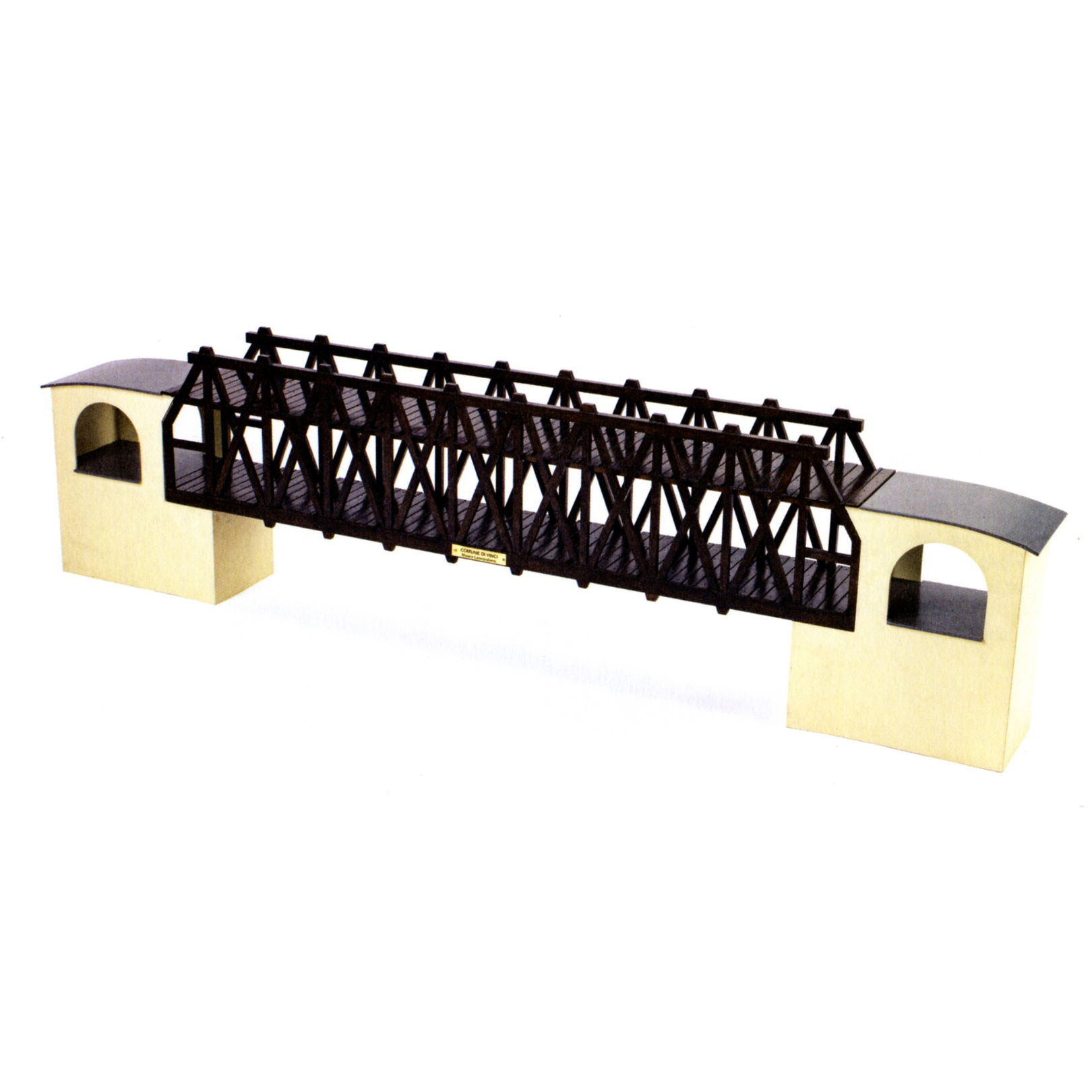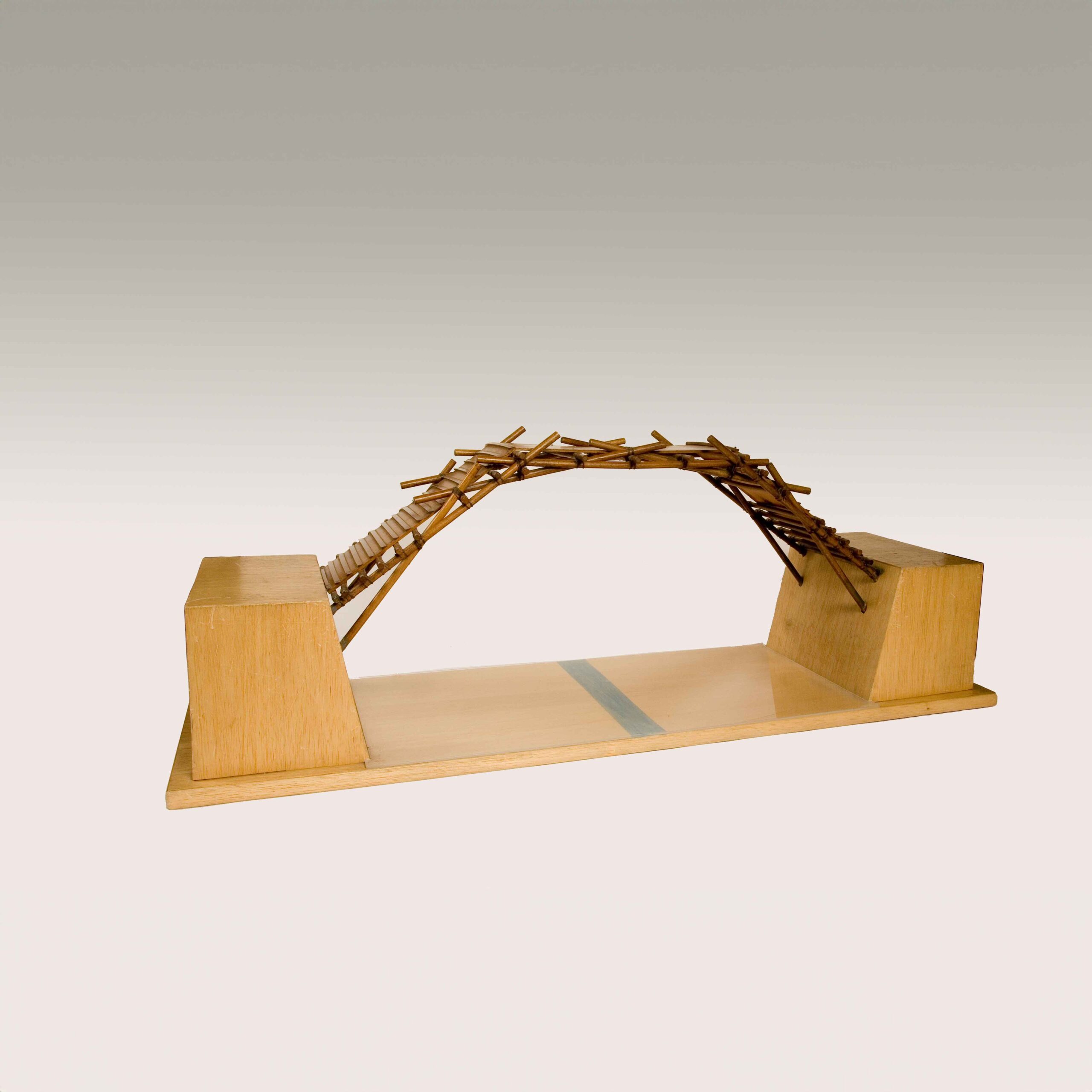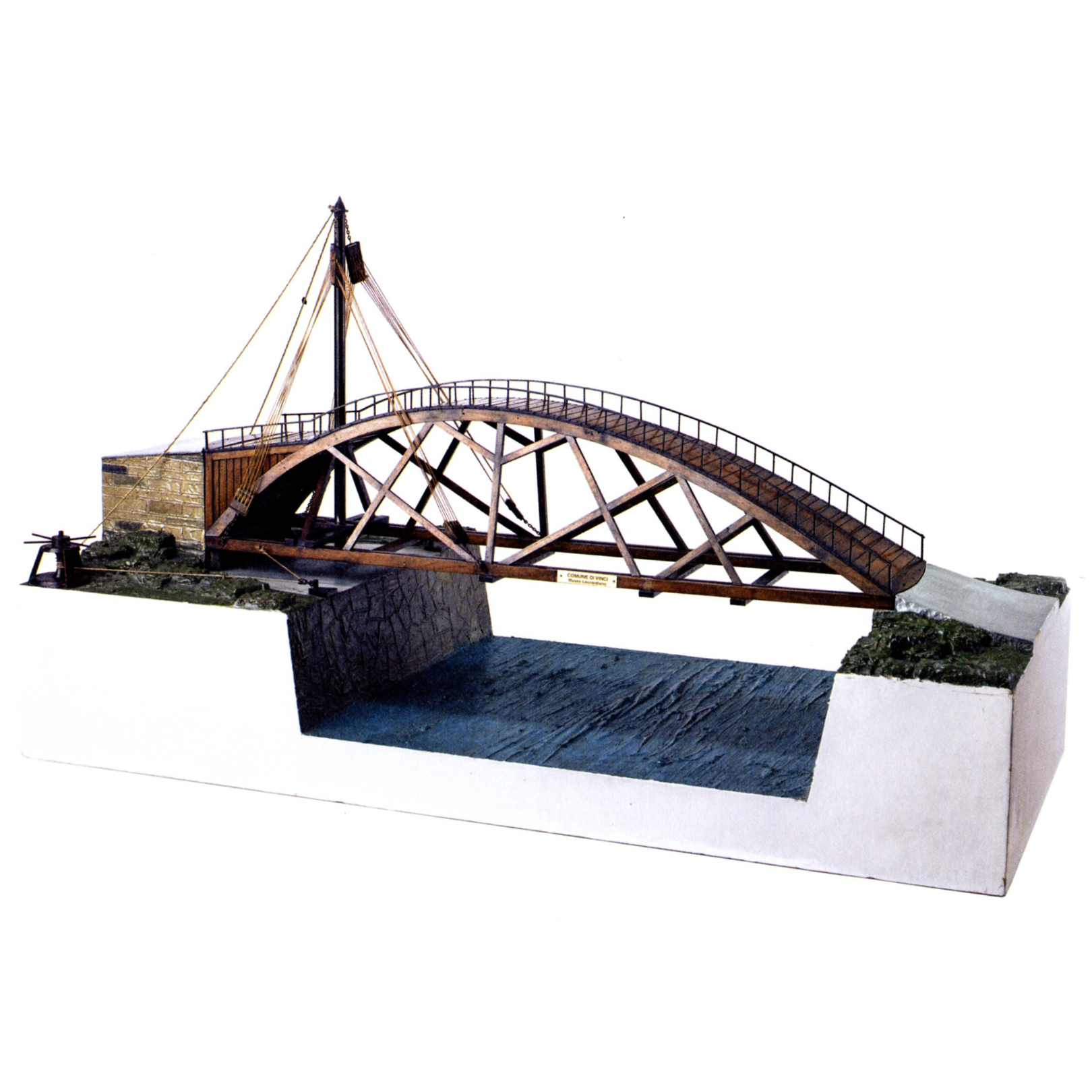Fascinated by the works of hydraulic regulation widespread in Lombardy, while in Milan Leonardo studied solutions for diverting and straightening watercourses. To connect two waterways situated on different levels, he designed this canal bridge with an ingenious system of basins and locks.
The novelty can be seen in the double-leaf doors that close against the water pressure from the current and in the small floodgate allowing water to gradually drain out. When a water vessel reaches the first lock, the floodgate opens and water flows into the basin below until equalizing the water level, thereby allowing the boat to advance. At this point, the hatch in the second lock opens, allowing a slow release of water, and so carrying the watercraft to a lower level. To avoid the formation of eddies from a rush of water at the opening of the doors, Leonardo modulated the height of the basin by means of steps, creating a water ladder aimed at reducing the force of the falling water.
This system was designed around 1503 for the project of diverting the River Arno, commissioned by the City of Florence. It was also utilized in the project for a canal to make the River Adda navigable around the tract known as the Tre Corni.
Technical informations
Type of exhibit
Model
Collection
Material
Partially painted carved wood, iron
Measures
Width: 34.5 cm; Length: 122 cm; Depth: 91.5 cm.
Storage location
Relationship with the original work
Source: Leonardo da Vinci, Codex Atlanticus, f. 126 v
Inventory number
Record n. OA: 00000015
Location
Museo Leonardiano, Counts Guidi's castle, ground floor
Last update: 10 November 2025, 12:57



